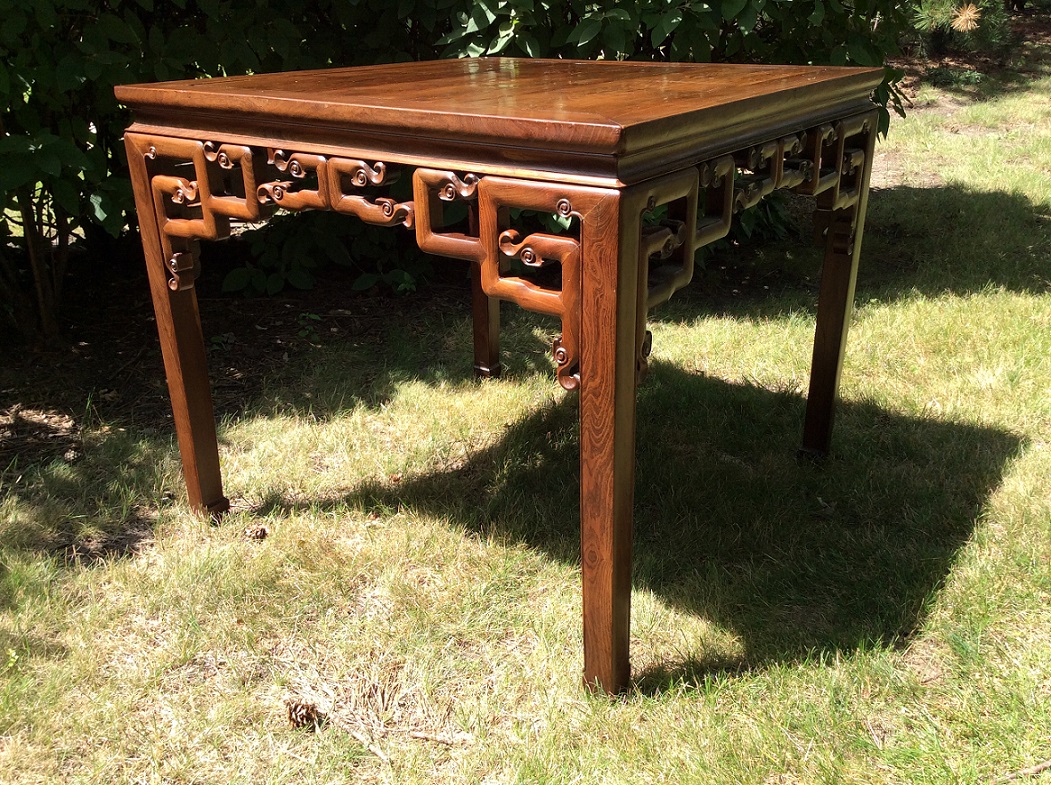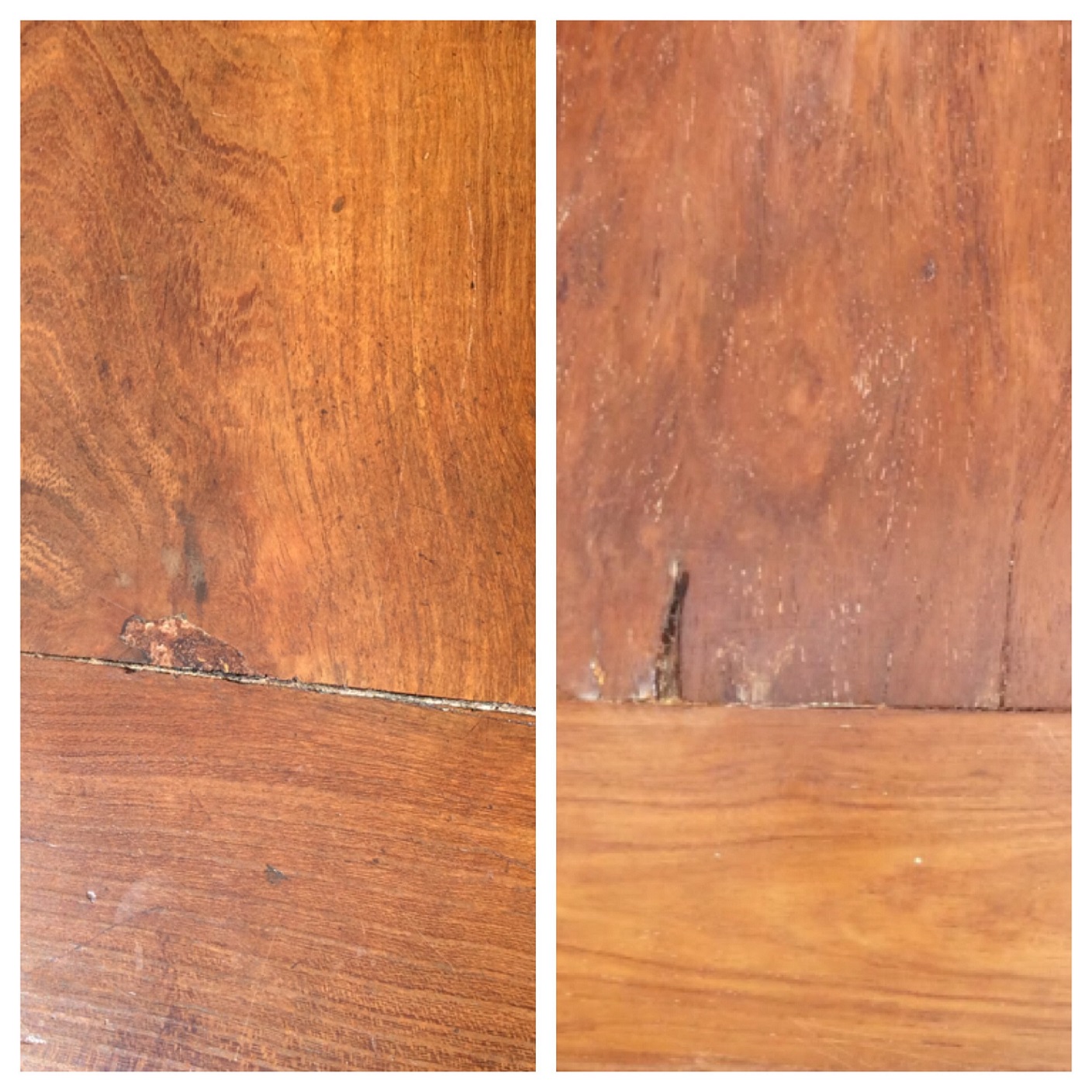
|
Subject:Imperial jichimu table?
Posted By: Tim Sun, Aug 07, 2016 IP: 64.80.141.122
I'm interested in opinions on the overall view of jichimu's desirability among collectors, information on variations in color/quality within the species, and if anyone could offer more specific dating of this table other than just Qing dynasty. Thanks.
I just returned from my trip to Chicago where I was first in line at an estate sale that showed in its advertised photos, what appeared to be a Qing period huanghuali square table.
It turned out that the table was jichimu, but I was impressed with both the quality of the wood and the carving, so I bought it anyway.
Interestingly, the many many Chinese buyers attending the sale seemed to disapprove of my purchase, apparently not holding jichimu in high regard.
I realize there is a significant difference in how the two woods are valued, but I have seen a couple of auction records from Christie's using 'imperial' to describe some very fine jichimu furniture in their titles, and sales up to $200,000 USD.
Examples of jichimu I've seen seem to have a rather consistent chocolate brown color, with alternating lighter colored bands. Also, the tell-tale zigzag (chicken wing) pattern of the grain almost always runs large concentric ovals, or in rather straight lines - clearly not the case with the table I just bought.
The maker of this table made the added effort to select very knotty wood, creating 'ghost' patterns (especially on the legs), something more commonly associated with huanghuali. The wood chosen for this table also has a more golden-red-brown color that appears natural to the wood (as opposed to the result of sun bleaching).
There is no shortage to the degree of carving, either. In the 2nd photo - far right, you can see that the concave carved waist that is capped on both the top and bottom with a semi elliptical bead. Also, the scrolling 'gui' dragon apron could have been more easily carved without the spiral hook like accents, but the delicate attention to the small details suggests a step up from the ordinary.
Needless to say, I consider the table a nice find. However, I haven't had much success finding a comparable piece, so I am left with a number of questions on the exact era the table was made and how it would rank in terms of quality among other jichimu pieces. Is it Imperial?
I hope members of the Forum will share their knowledge and opinions.
Below are photos I took in natural light of the table. The last photo is a comparison of a section of the jichimu table top side by side to the section of a huanghuali table top I bought last year. I find it quite remarkable how close in color, and even some aspects of the pattern of the grain, that the two tables seem to share.
Looking forward to the feedback. Thanks!



Link :18-19th c. Jichimu table $75,000 Christie\'s 2015


|
 Imperial jichimu table?
Imperial jichimu table?  ( China & Japan ) - Tim - Aug 07, 2016 (12:24 PM)
( China & Japan ) - Tim - Aug 07, 2016 (12:24 PM)  Re: Imperial jichimu table? - Kirk - Oct 24, 2016 (01:38 PM)
Re: Imperial jichimu table? - Kirk - Oct 24, 2016 (01:38 PM)